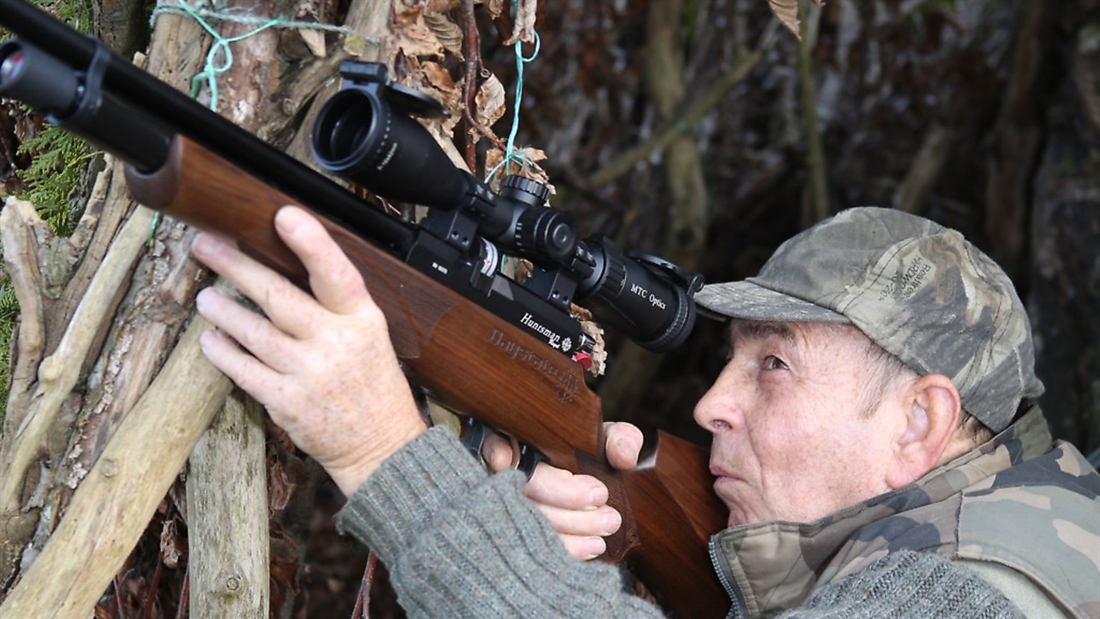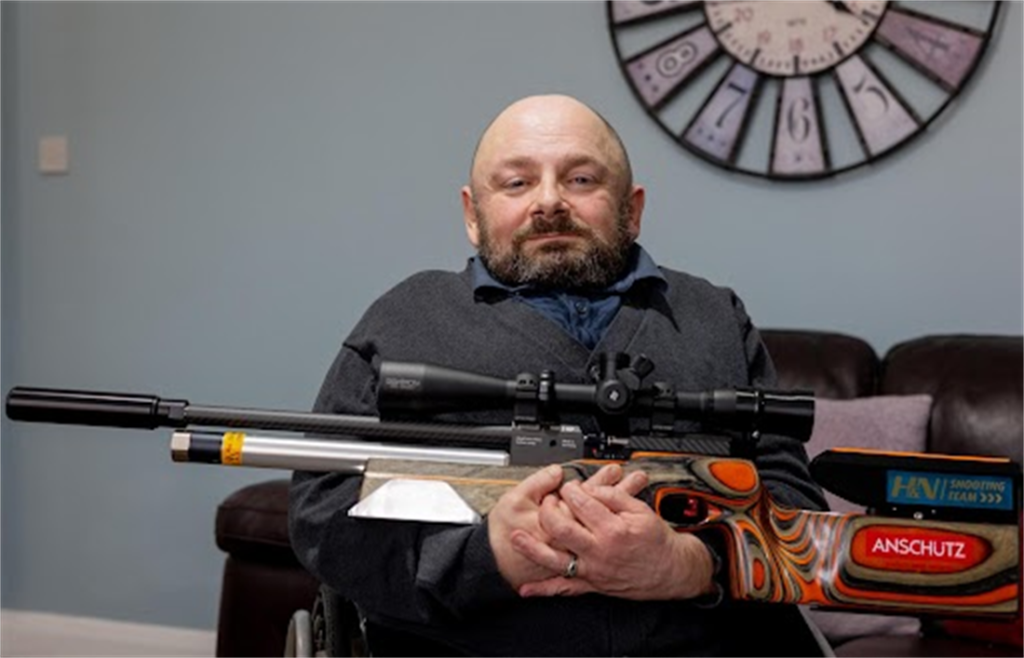Barry Hearn: Your hunting questions answered
Barry Hearn is a great believer in sharing what he’s learned over the years, and here are the answers to some of the many questions sent in by our readers credit: Archant One of the greatest pleasures of hunting is helping others to be more successful, by passing on the lessons experience has taught me
Would you like to appear on our site? We offer sponsored articles and advertising to put you in front of our readers. Find out more.
Barry Hearn is a great believer in sharing what he’s learned over the years, and here are the answers to some of the many questions sent in by our readers
One of the greatest pleasures of hunting is helping others to be more successful, by passing on the lessons experience has taught me during almost 50 years in the field. Personal success will always be a positive and enjoyable part of this sport, but as time goes by, I find the reflected pleasure of someone else’s triumphs to be even more of a buzz, especially if I might have had a part to play in it.
Air Gunner readers have been sending in quite a few questions for me, and with them some truly appreciated comments, and I’d like to deal with as many as I can. To cover as many subjects as possible, I’ve combined some questions and I’ll deal with them under general headings. I hope that makes sense, and more importantly, I hope my advice helps!
Can it become too hot to hunt?
By the time this edition of Air Gunner is released we will be well into August and September, and there will be some days when the countryside will be well and truly scorched by the summer sun. My policy in extreme heat is exactly the same as the one I use during prolonged freezing spells in winter – I give the quarry, and myself, some time off.
Unless I’ve been asked to deal with a specific vermin problem, I hunt because I enjoy it. Without that enjoyment, and roasting or freezing in a hide for hours on end is never fun, I simply find better things to do.
I might walk around my permissions, just to keep an eye on things, but daytime hunting is suspended, and I’ll only hunt at night if I feel the rabbits are coping with the conditions. To many, having such consideration for a classified vermin species will sound ludicrous, but unless a wipeout policy is required – such as with rats and occasionally grey squirrels – I see my priority as management of the natural resources.
Is mobility important?
One of my ‘golden rules’ when I’m in the field, is to travel light and to be as mobile as I possibly can. This allows me to respond to my quarry’s movements and to relocate to a more productive area, should the need arise. Never forget, you can make the finest of plans, but your quarry won’t be at that meeting and might well have a completely different agenda on the day of your hunt. It’s your quarry that dictates the success, or otherwise, of any field trip, so you have to be able to change those meticulous plans as soon as it becomes obvious that a change is needed.
To make the best of any new strategy, I do as much pre-session work as possible. This usually includes making sure I have several usable hides available and ready to use, plus having as many stalking routes as possible established, covering the current quarry hotspots.
Plans for any hunting day must include contingencies and you must be able to pack up and be able to shift within a couple of minutes. I take my rifle, a flask of coffee, some basic hide-dressing tools, my rangefinder and my mobile phone. I use my gamebag as a carryall and any extra kit can be stashed in the car. Travel light, respond efficiently, make the most of your precious hunting time.
How ‘light tight’ does a hide need to be?
If there’s anything guaranteed to spook your quarry and render your hide useless, it’s your movement being spotted, and nothing will help give you away more than patches of light inside your hide. Sunlight streaming in through gaps in your hide canopy acts like a torch beam, against which your silhouette will be easy to spot. I’m little short of obsessive about making my hides ‘light tight’, but only in accordance with my quarry’s directions of approach and points of observation. Basically, I make sure all the chinks are plugged, either with black bin liner plastic or natural foliage, or both, and this is done to cover every flightline or perching position available to incoming or sitting birds. If it’s impossible to see me from the sides or rear of my hide, I’m not too bothered, but from where I can be spotted, I black out every pinpoint of light. Better to overdo the light-tightness deal than to leave chinks in your hunting armour.
Latest technology versus fieldcraft?
Several readers expressed surprise that, as a ‘traditional’ hunter, I recommended the use of a laser rangefinder in last month’s issue, and a few have asked what’s more important, fieldcraft or the latest technology. My answer couldn’t be simpler; proven technology is a genuine advantage, but nothing will replace fieldcraft. Each complements the other and the combination of both will make your hunting more productive, but never, ever think that having the latest rifle, scope, or gadget will excuse you from the use of good fieldcraft. I managed to be successful before the sophistication of my hardware helped me put pellets in the same hole at 30 yards, and I know I could fill a gamebag if I had only the kit from yesteryear, but take away the fieldcraft and the best hardware in the world won’t help you.
As someone who remembers using lamping gear cobbled together from leaky, lead-acid batteries and motorbike headlamps, plus pellets that far too regularly flew where they fancied, over-sprung rifles that kicked like donkeys and scopes that often fell apart, I’m incredibly grateful for the gear we have today. The point is, that technology should be used to improve our skills, not replace them. Fieldcraft is the key, and always will be.
How important is comfort in a hide?
Hide shooting can mean sitting in the same place for several hours, and if you’re not comfortable, you won’t enjoy your session or shoot to the best of your ability. That’s why all of my hides have supportive seats in them, either rustic benches made from branches or scrap timber, or sometimes I’ll incorporate a proper seat in the build and add my creature comforts when and where I can.
I like my hides to have a handy shelf in them, where I can sit my cup, a loaded magazine, or even a radio – yes, really. I have a battery radio stashed in a couple of my hides, and I listen to it as I wait for incoming birds. Obviously, the volume’s set low, but I’ve never known it spook anything, and it keeps me informed about what’s going on in the real world.
Make no mistake, comfort is a key factor in the success of any hide-shooting session and I’d strongly advise you to build yourself a supporting seat, that won’t give you a numb bum and pins and needles after 20 minutes.
Is bigger always better?
Several readers want to know if a larger hide is a better option, or should they keep their hides as compact and unobtrusive as possible. First, even the smallest hide will be noticed by the local quarry, but the good news is, even the largest hides will eventually become part of the landscape and accepted as such.
If you go hunting with a mate, I’d say build a hide that’s large enough to accommodate you both comfortably. You’ll be able to cover more potential targets that way, and provided you keep the chat at a civilised level, hide sessions with a buddy can be great. That said, some of my most effective hides have been tiny, sparse affairs, comprising little more than a front and top screen, plus a seat, of course. As I’ve stated elsewhere, as long as the incoming quarry can’t spot you, your hide doesn’t have to be lavish. It just needs to be effective.
__________________________________________________
Read more from Barry Hearn…
Q&A with Barry Hearn, hide-hunting shooting master
Prepare for success with Barry Hearn’s hide-hunting masterclass
Prepare for success with Barry Hearn’s hide-hunting masterclass (part 2)
Related articles
Get the latest news delivered direct to your door
Subscribe to Airgun World










